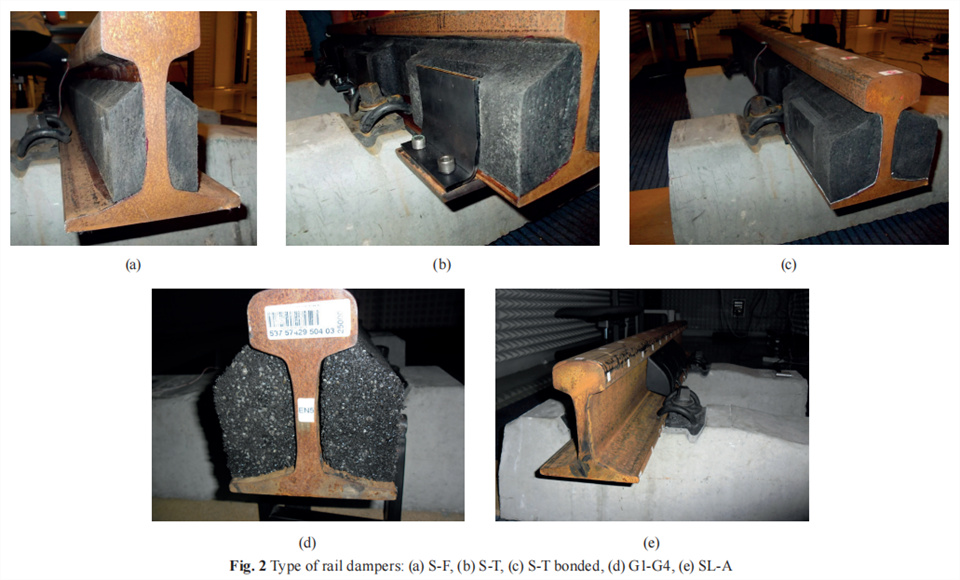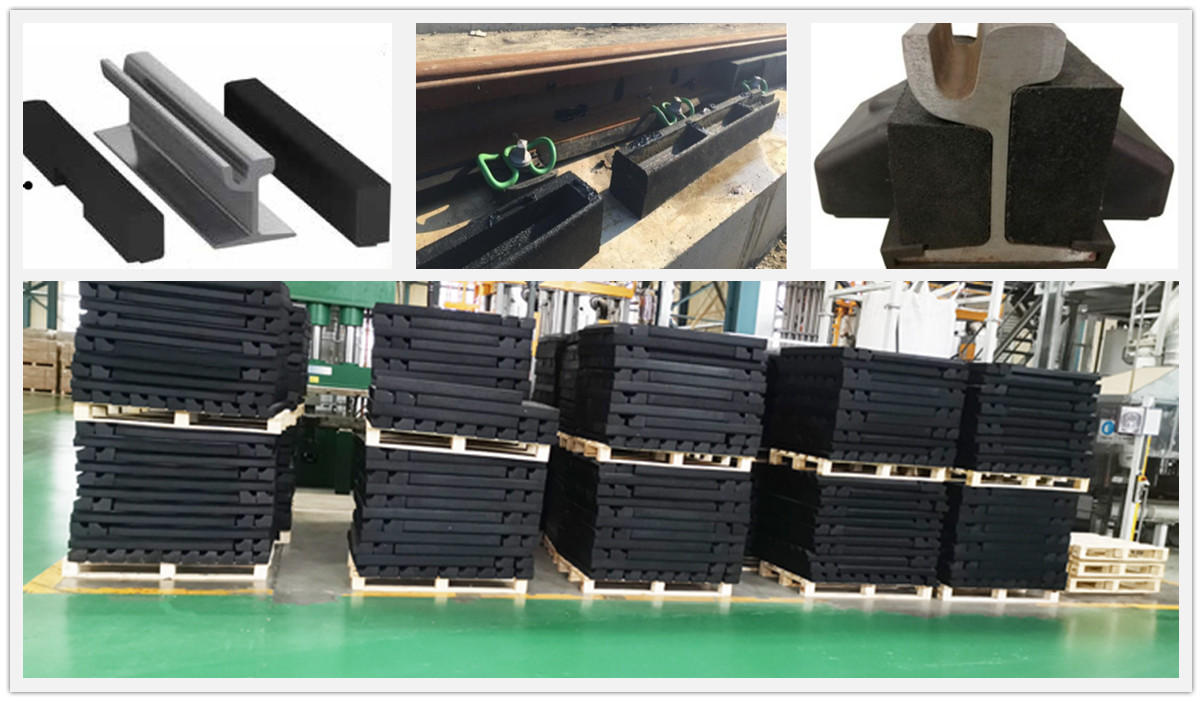Chamer Filling Eelements (Railway Rail Dampers)
Sep 12, 2022
There are more and more possibilities to mitigate noise and vibration emitted by railway transport to the lower levels. Among them, rail dampers with highly viscous properties placed on the rail web, fixed with adhesives or other methods, appeared as a new element in the railway superstructure. The rail dampers or absorbers are applied to reduce noise and vibration by transforming the vibration energy of the rail web into heat, through their large internal friction.

Due to the relatively small mass and stiffness of the rail web it can easily vibrate, therefore it is considered a weak point of the system acoustically. The rail dampers reduce noise and vibration by transforming the vibration energy into heat, through their large internal friction. One of the well-known basic principles of acoustics is that the most effective way to reduce undesirable vibrations is to focus directly on their source.

The chamber filling elements(CFE) production line in Anyang Railway Equipment Co., Ltd is composed of 500-ton and 700-ton hot presses imported from Germany, and the all-aluminum mold ensures the stable quality of the product in terms of density and size, the production capacity is 7 km/month.

The chamber filling elements(CFE) production line in Anyang Railway Equipment Co., Ltd was specially developed for insulation of slab tracks in urban traffic. They are inserted into turnouts, soft concrete or grass and seal the rail electrically and acoustically.

Chamber filling elements for railway rails made by Anyang Railay Equipment Co., Ltd are made of tyre granulate, polyurethane adhesive and water. They are composed of an external and internal element as well as an elastic rail foot boot. These external and internal elements are adapted to the re-spective superstructure of the track in cooperation with the customer.

Due to the relatively small mass and stiffness of the rail web it can easily vibrate, therefore it is considered a weak point of the system acoustically. The rail dampers reduce noise and vibration by transforming the vibration energy into heat, through their large internal friction. One of the well-known basic principles of acoustics is that the most effective way to reduce undesirable vibrations is to focus directly on their source.

The chamber filling elements(CFE) production line in Anyang Railway Equipment Co., Ltd is composed of 500-ton and 700-ton hot presses imported from Germany, and the all-aluminum mold ensures the stable quality of the product in terms of density and size, the production capacity is 7 km/month.

The chamber filling elements(CFE) production line in Anyang Railway Equipment Co., Ltd was specially developed for insulation of slab tracks in urban traffic. They are inserted into turnouts, soft concrete or grass and seal the rail electrically and acoustically.

Chamber filling elements for railway rails made by Anyang Railay Equipment Co., Ltd are made of tyre granulate, polyurethane adhesive and water. They are composed of an external and internal element as well as an elastic rail foot boot. These external and internal elements are adapted to the re-spective superstructure of the track in cooperation with the customer.
| Density | >0.9 g/cm³ | GB/T 6343-2009 |
| Tensile strength | ≥ 1.1 MPa | GB/T 10654-2001 |
| Elongation at break | ≥ 66 % | GB/T 10654-2001 |
| Volume and mass change due to water adsorption | Volume change: no water adsorption ≤ 1 % | GB/T 1690-2010 |
| Conductivity in dry environment | < 0.3 · 10-³ S/km | GB/T 1410-2006 |
| Conductivity in contact with salt water | < 0.8 · 10-³ S/km | GB/T 1410-2006 |

